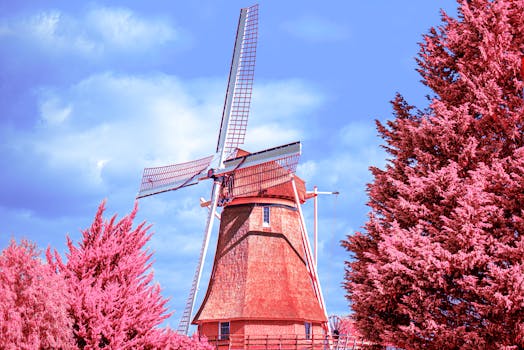Color Correction in Photo Editing Apps
Color correction is a fundamental aspect of photo editing that can transform ordinary images into visually stunning masterpieces. With the advent of powerful photo editing apps, this process has become accessible to everyone, allowing users to correct and perfect their photos with just a few taps.
Photo editing apps like Adobe Lightroom, Snapseed, and VSCO have revolutionized the way we approach color correction.

These tools offer a wide range of features that enable users to adjust brightness, contrast, saturation, and more. Knowing the methods to use these features effectively can make a significant difference in the quality of your photos. It's not just about making colors pop; it's about achieving the right balance and harmony in your images.
Color correction involves various techniques and tools that cater to different needs and preferences. From basic adjustments like white balance correction to advanced techniques like selective color grading, photo editing apps provide a comprehensive suite of options. As technology continues to evolve, these apps are becoming more sophisticated, offering AI-driven features that simplify the process for users at all skill levels.
Understanding the Basics of Color Correction
Color correction is about adjusting the colors in an image to match what we perceive as natural or aesthetically pleasing. This process often starts with correcting the white balance, which ensures that the colors in your photo are accurate under different lighting conditions. Most photo editing apps have an automatic white balance adjustment feature, but manual adjustments can give you more control.
Brightness and contrast adjustments are also essential components of color correction. Brightness alters the overall lightness or darkness of an image, while contrast affects the difference between light and dark areas. Properly balancing these elements can enhance the details and depth in your photos.
Saturation and vibrance controls allow you to manage the intensity of colors. Saturation increases the overall intensity of all colors in an image, while vibrance selectively boosts less saturated colors without affecting already vibrant areas. This helps in creating a balanced look without overdoing it.
Advanced Techniques: Selective Color Grading
Selective color grading is an advanced technique used by professionals to emphasize specific colors in an image while muting others. This method can create a dramatic effect and draw attention to particular elements within a photo. Apps like Adobe Lightroom offer tools such as HSL (Hue, Saturation, Luminance) sliders that allow precise control over individual colors.
Split toning is another advanced technique where you add different colors to the shadows and highlights of an image. This can create a unique mood or style that sets your photos apart. For instance, adding warm tones to highlights and cool tones to shadows can give your images a cinematic look.
The Role of AI in Modern Photo Editing Apps
Artificial intelligence has made significant strides in simplifying color correction for users at all levels. Modern photo editing apps leverage AI algorithms to analyze images and suggest optimal adjustments automatically. This feature is especially useful for beginners who may not have a deep understanding of color theory but still want professional-looking results.
AI-driven tools can also help in identifying and correcting common issues such as underexposure or overexposure. By analyzing the histogram data of an image, these tools can make precise adjustments that enhance overall image quality.
Practical Tips for Effective Color Correction
While technology has made color correction more accessible, there are still best practices that can help you achieve better results. Here are some practical tips:
- Shoot in RAW: RAW files retain more color information than JPEGs, giving you greater flexibility during editing.
- Calibrate Your Monitor: Ensuring your monitor displays accurate colors is crucial for effective color correction.
- Use Presets Wisely: Many apps offer preset filters that can be great starting points but always fine-tune them to suit your specific image.
- Avoid Over-Saturation: Overly saturated images can look unnatural; aim for a balanced approach.
Color correction is an essential skill for anyone interested in photography. With the right tools and techniques, you can significantly enhance the visual appeal of your images. Whether you're using professional software like Adobe Lightroom or mobile apps like Snapseed, understanding how to adjust colors effectively will take your photos to the next level.
The advancements in AI-driven tools have made this process more intuitive than ever before, allowing even beginners to achieve impressive results.